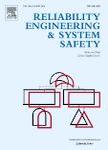版权所有:内蒙古大学图书馆 技术提供:维普资讯• 智图
内蒙古自治区呼和浩特市赛罕区大学西街235号 邮编: 010021

作者机构:Tongji Univ Coll Civil Engn Shanghai 200092 Peoples R China
出 版 物:《RELIABILITY ENGINEERING & SYSTEM SAFETY》 (Reliab Eng Syst Saf)
年 卷 期:2025年第257卷
核心收录:
学科分类:1201[管理学-管理科学与工程(可授管理学、工学学位)] 08[工学] 0837[工学-安全科学与工程]
主 题:Power system System functional model Post-earthquake recovery path Optimisation algorithm Seismic resilience improvement
摘 要:Power systems suffer significant damage during earthquakes and recover slowly. To assess the seismic resilience and optimise the post-earthquake recovery of power systems, this paper proposes a multi-model framework for assessing power systems performance. The seismic intensity attenuation model was determined based on seismic characteristics. A method for evaluating the operational state of power-system components was developed using seismic vulnerability curves. An operational network model of power systems was created using undirected weighted graphs and adjacency matrices. The power-transmission efficiency, reliability, and power-load capacity of the network model were considered to propose functional metrics for quantitatively assessing the working state of the system. Subsequently, a post-earthquake recovery optimisation framework for power systems was proposed by establishing functional time-varying parameters, curves, and resilience metrics. A four-stage process for analysing recovery-path optimisation was explicitly defined based on seismic resilience metrics., the recovery characteristics and the optimal recovery path were identified by analysing the recovery optimisation of a typical power-network test system. Finally, the seismic retrofitting effects and economic benefits of infrastructure were evaluated, and key components of seismic reinforcement were identified.